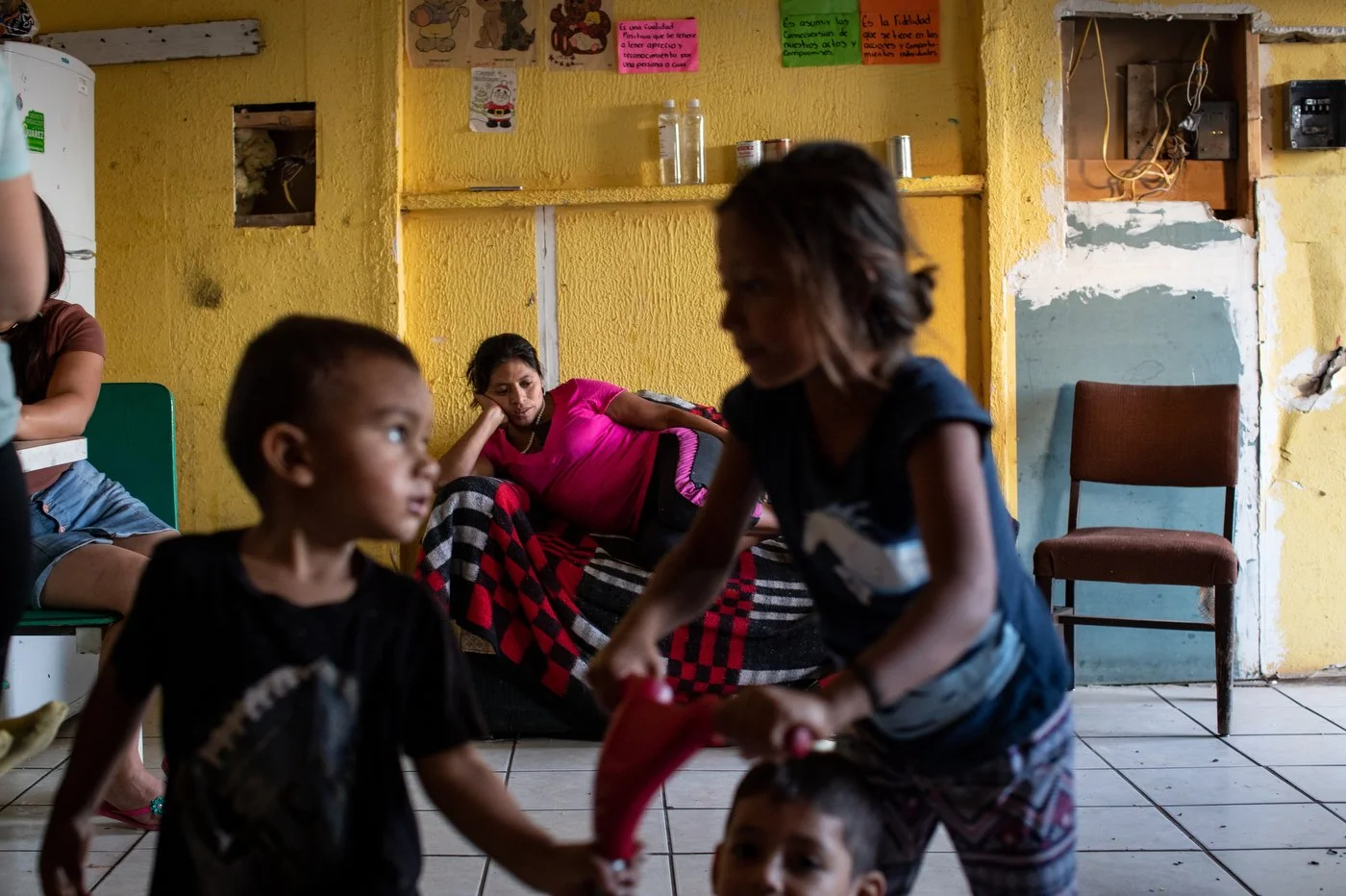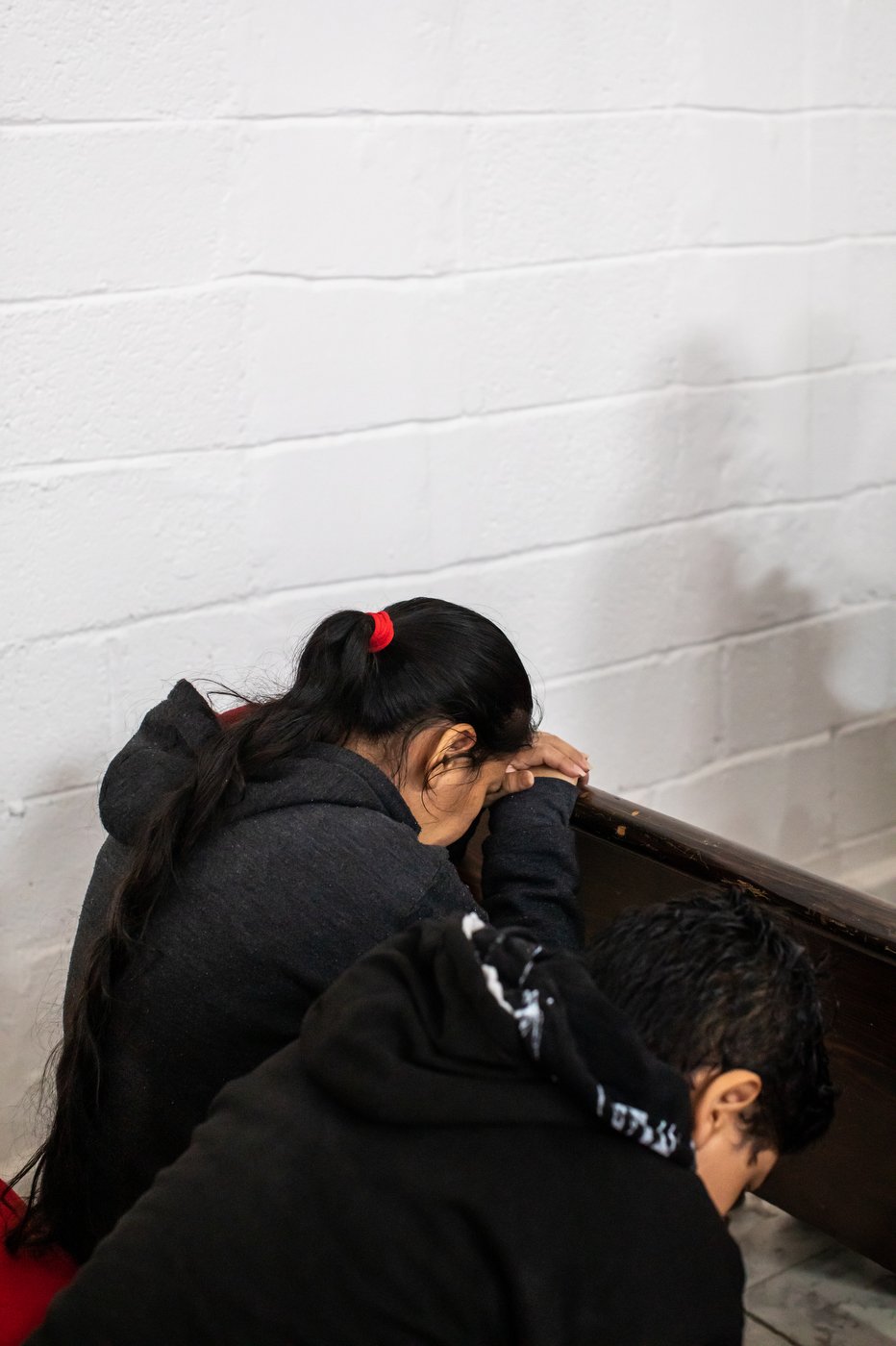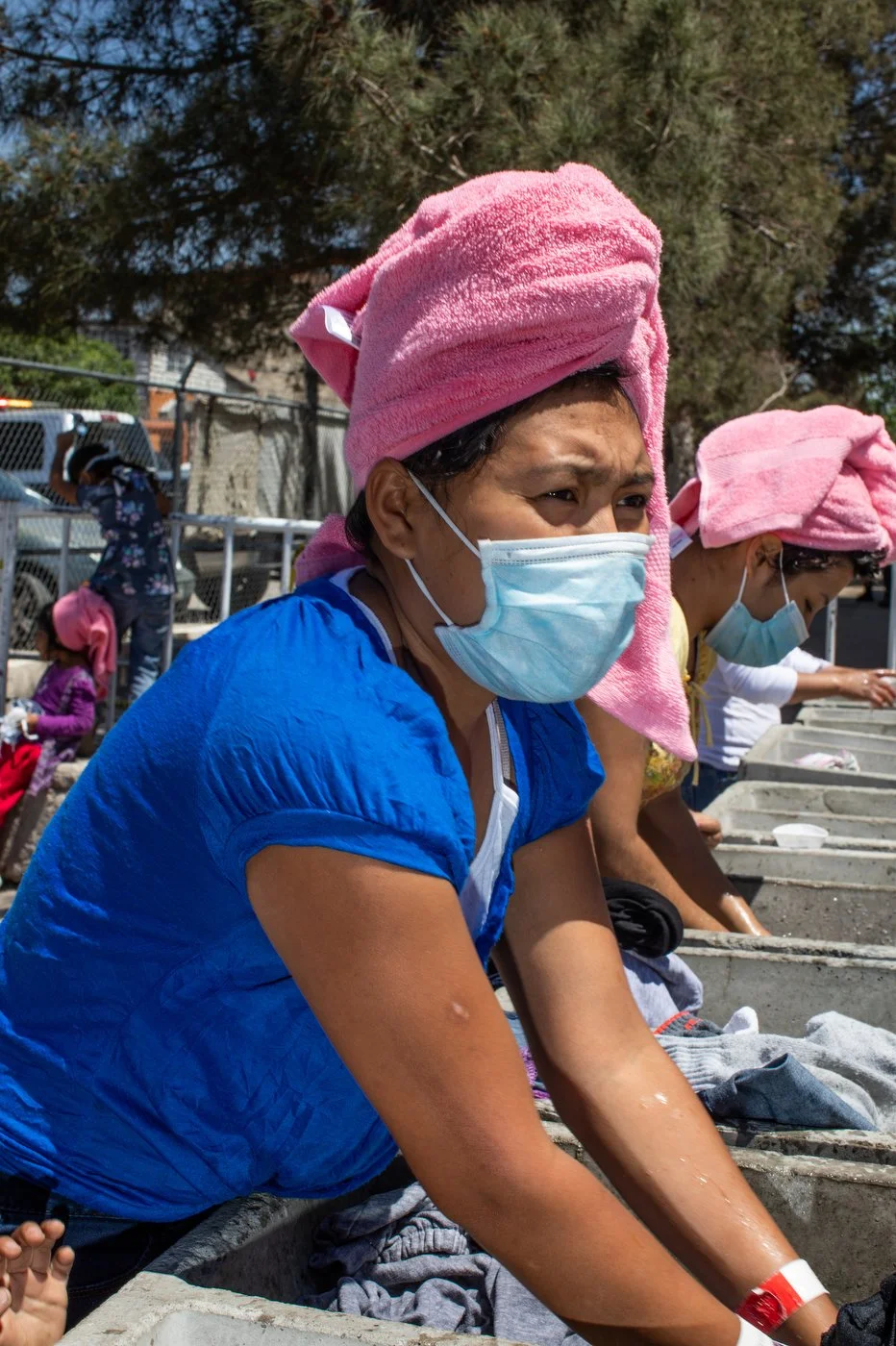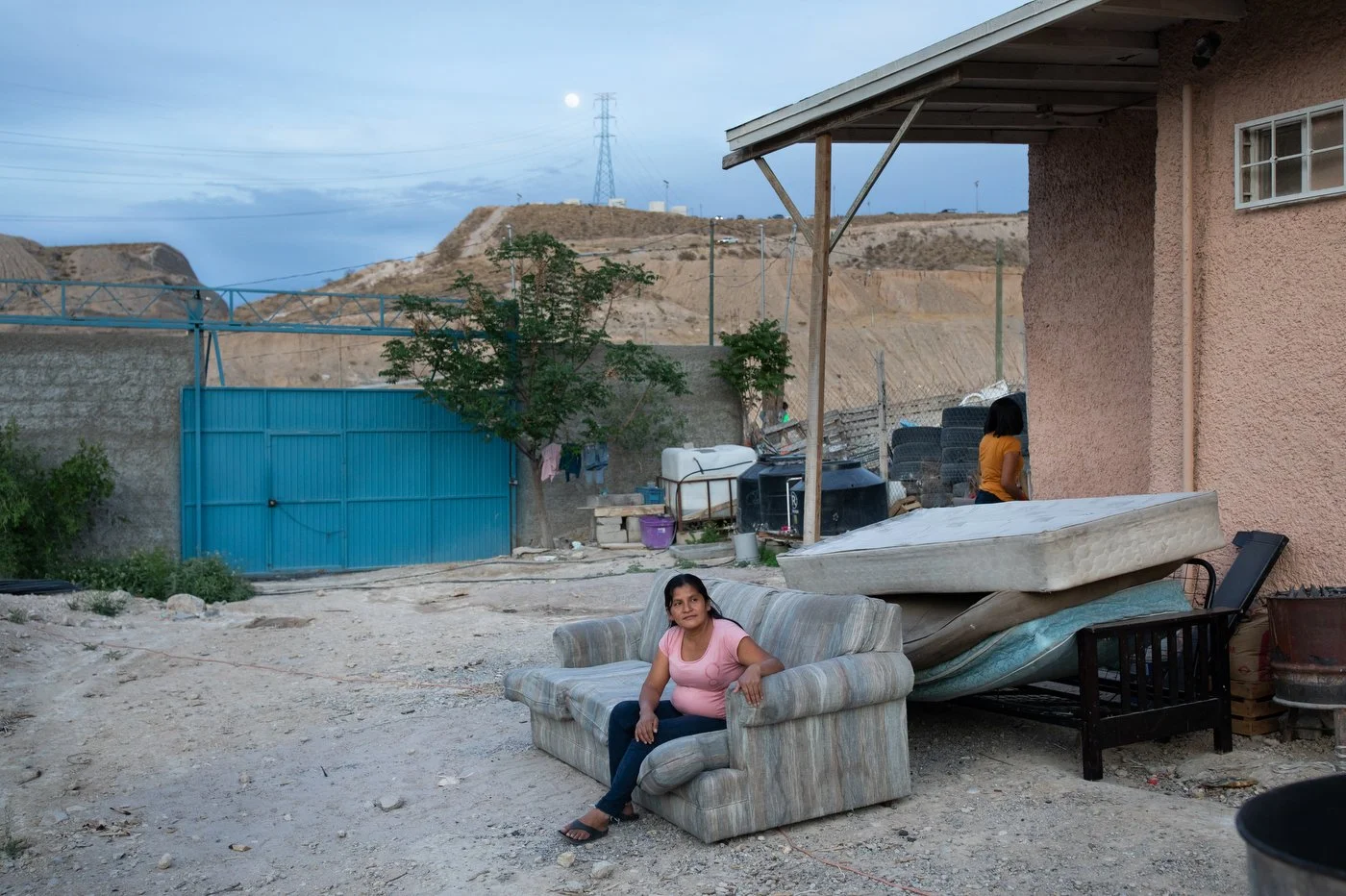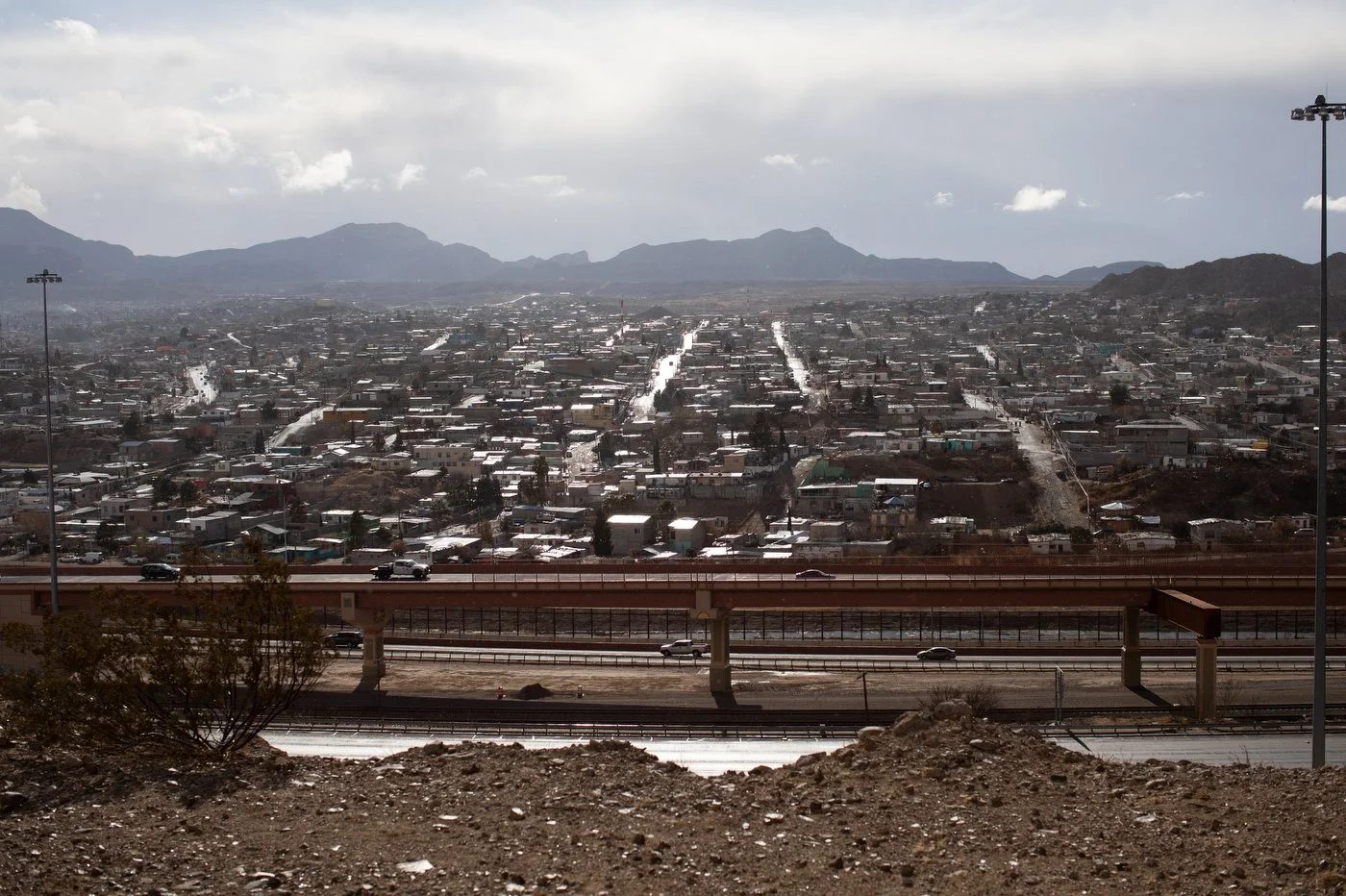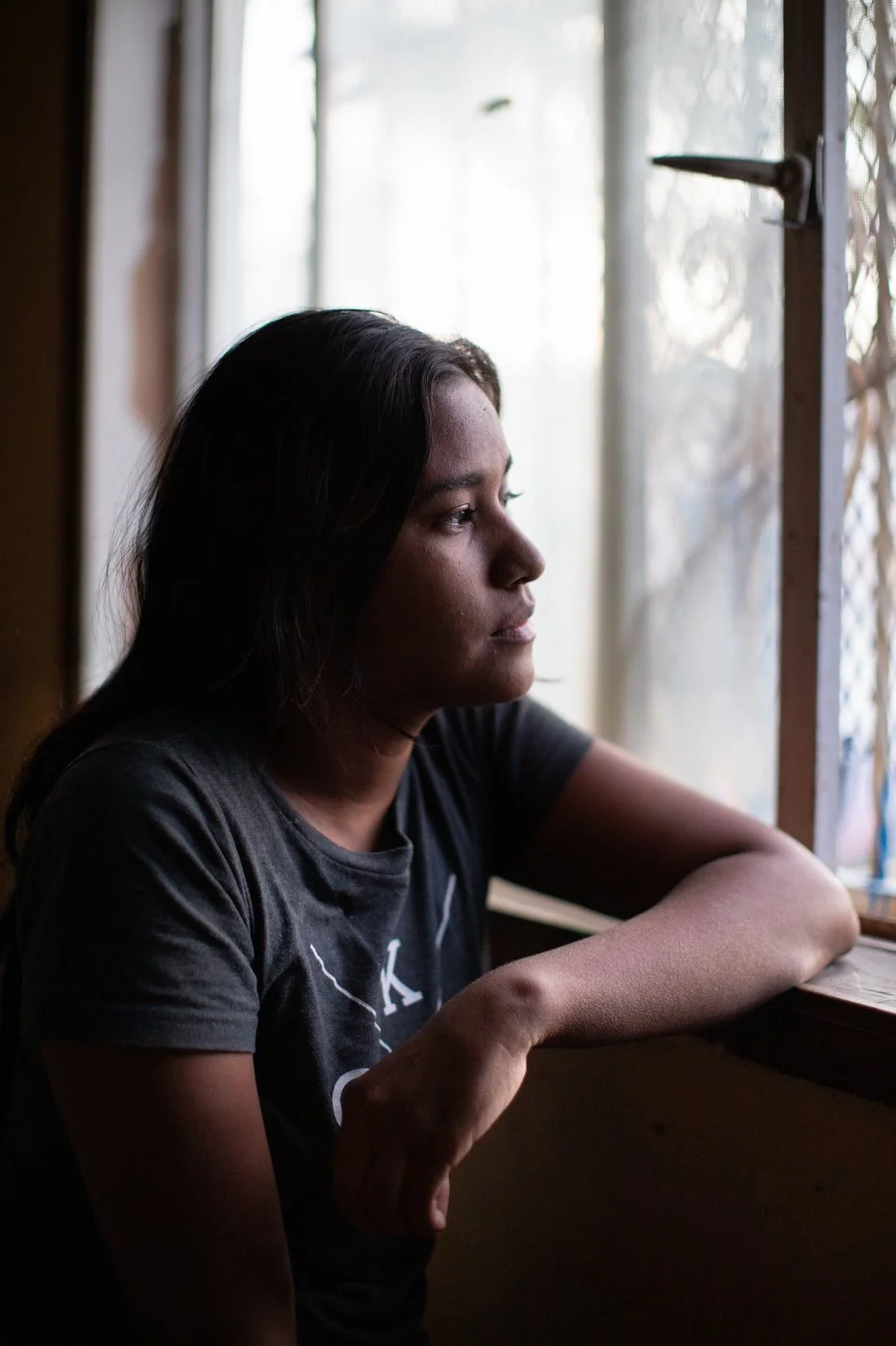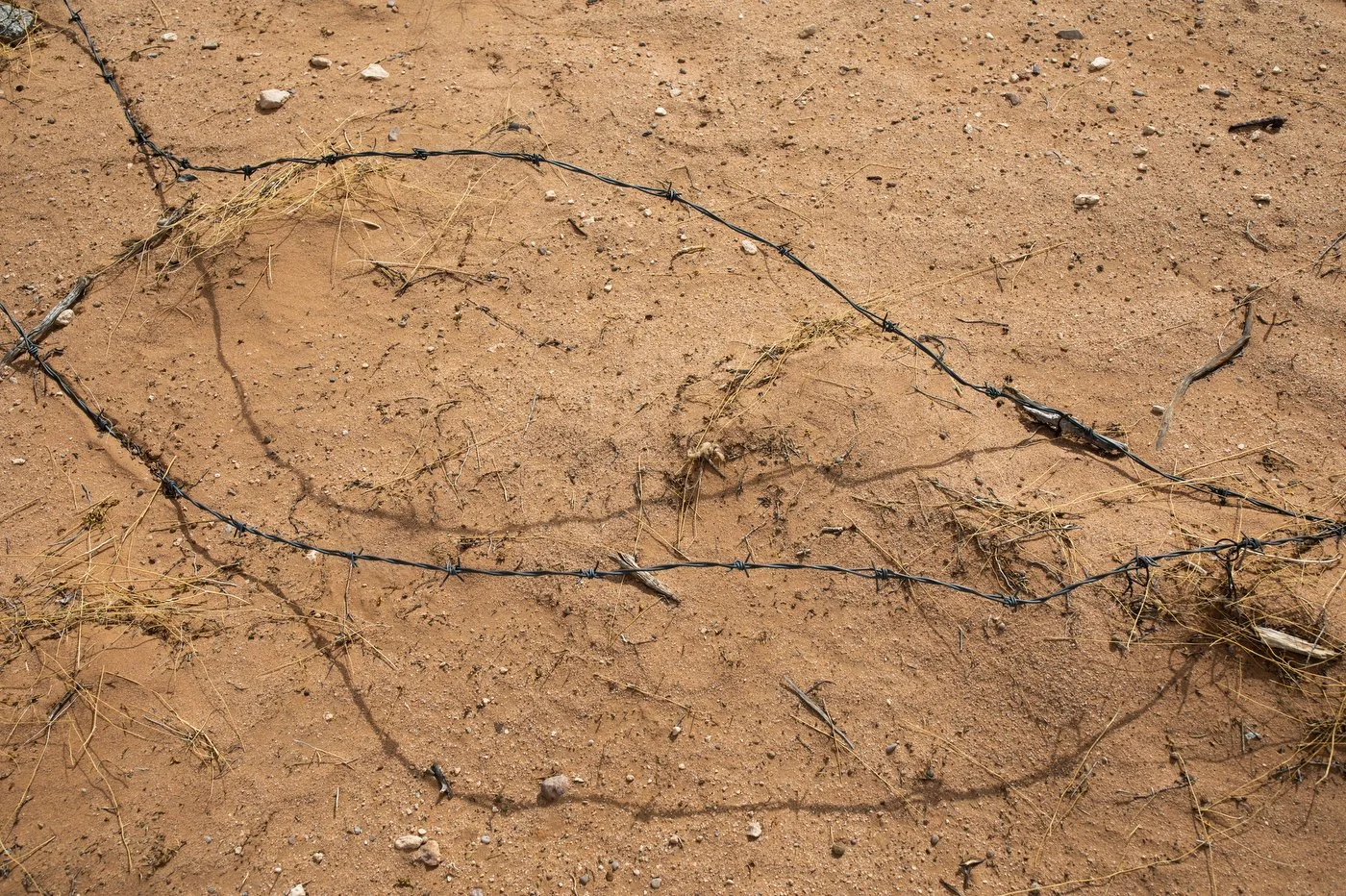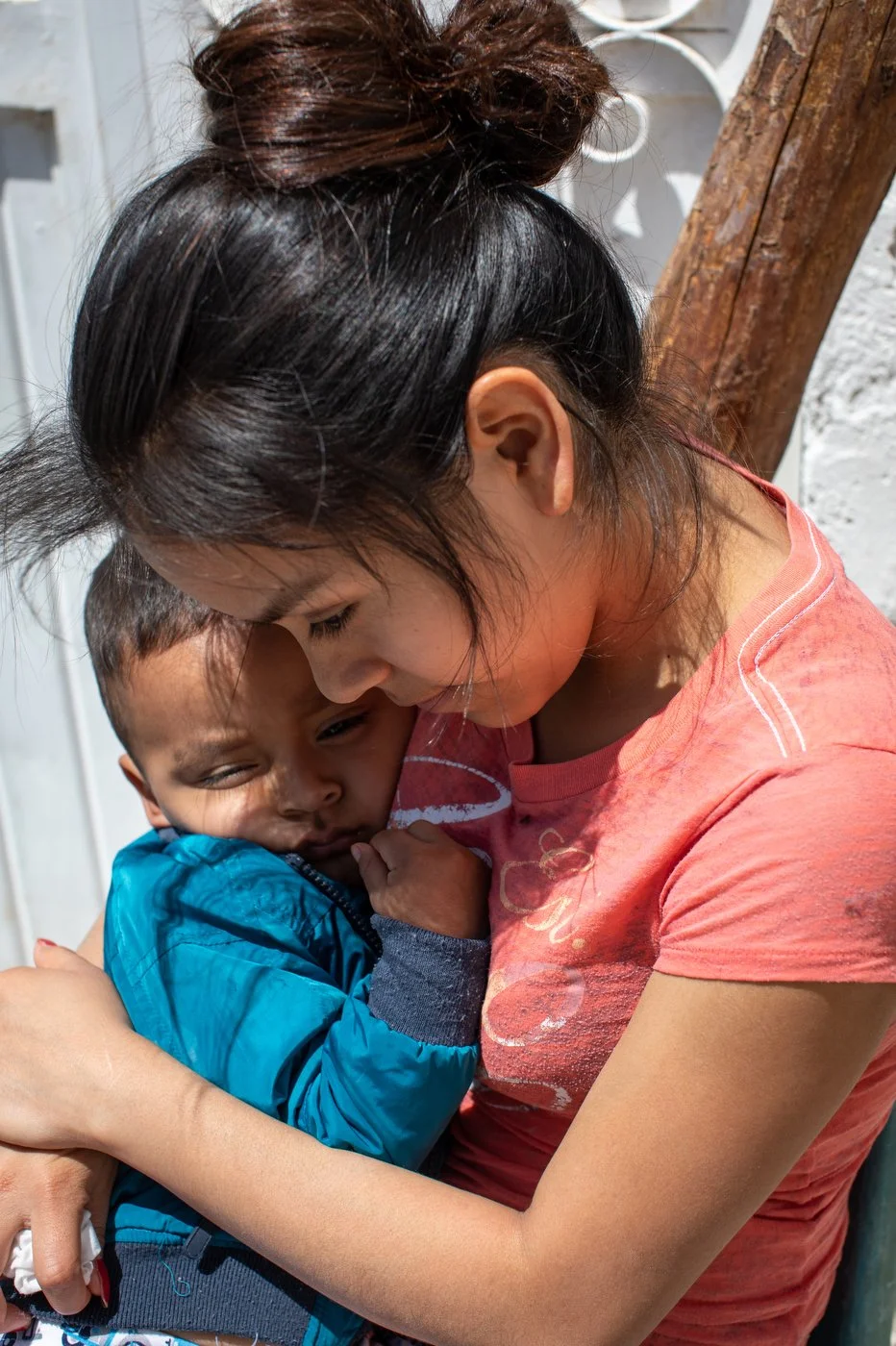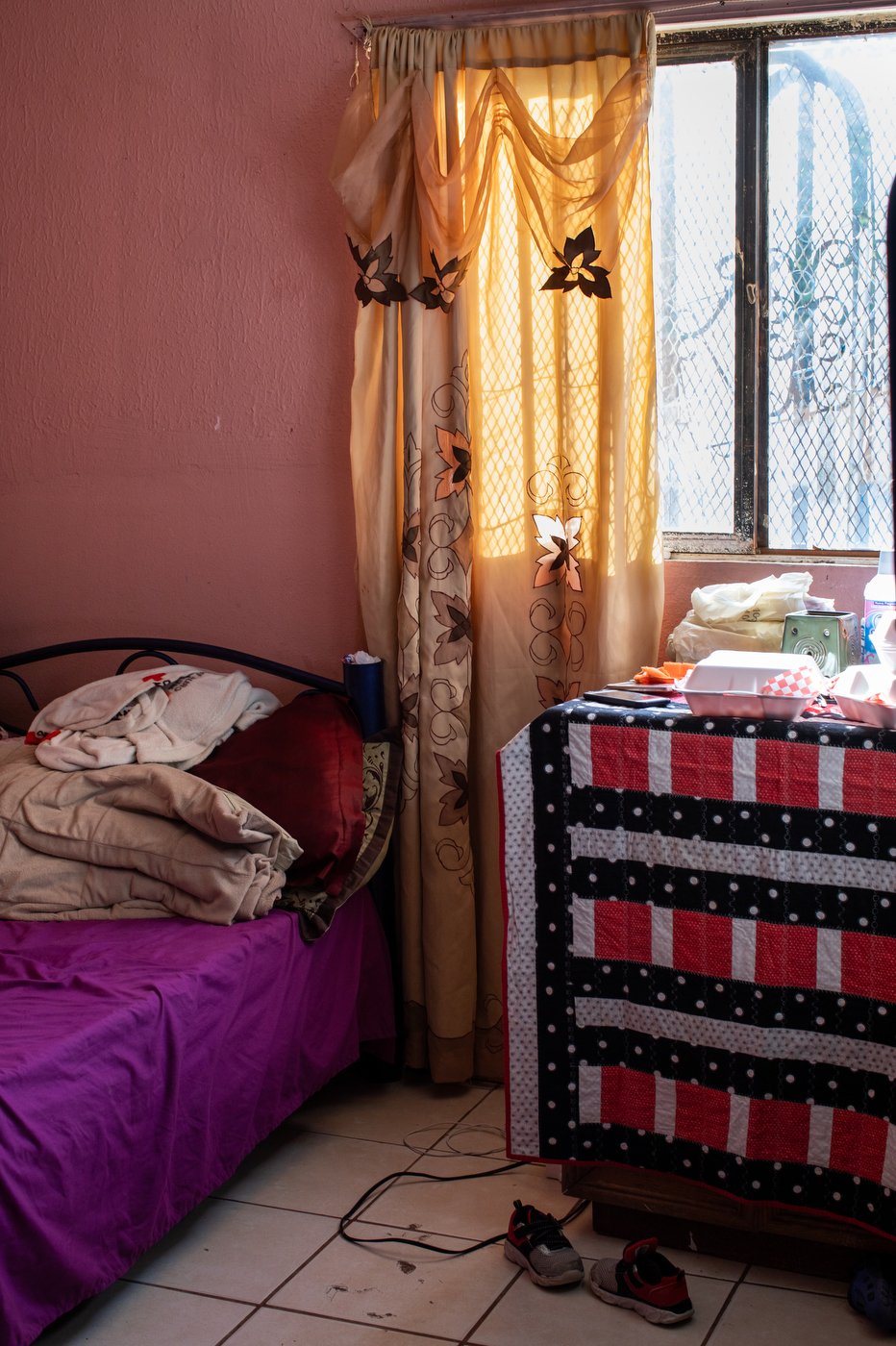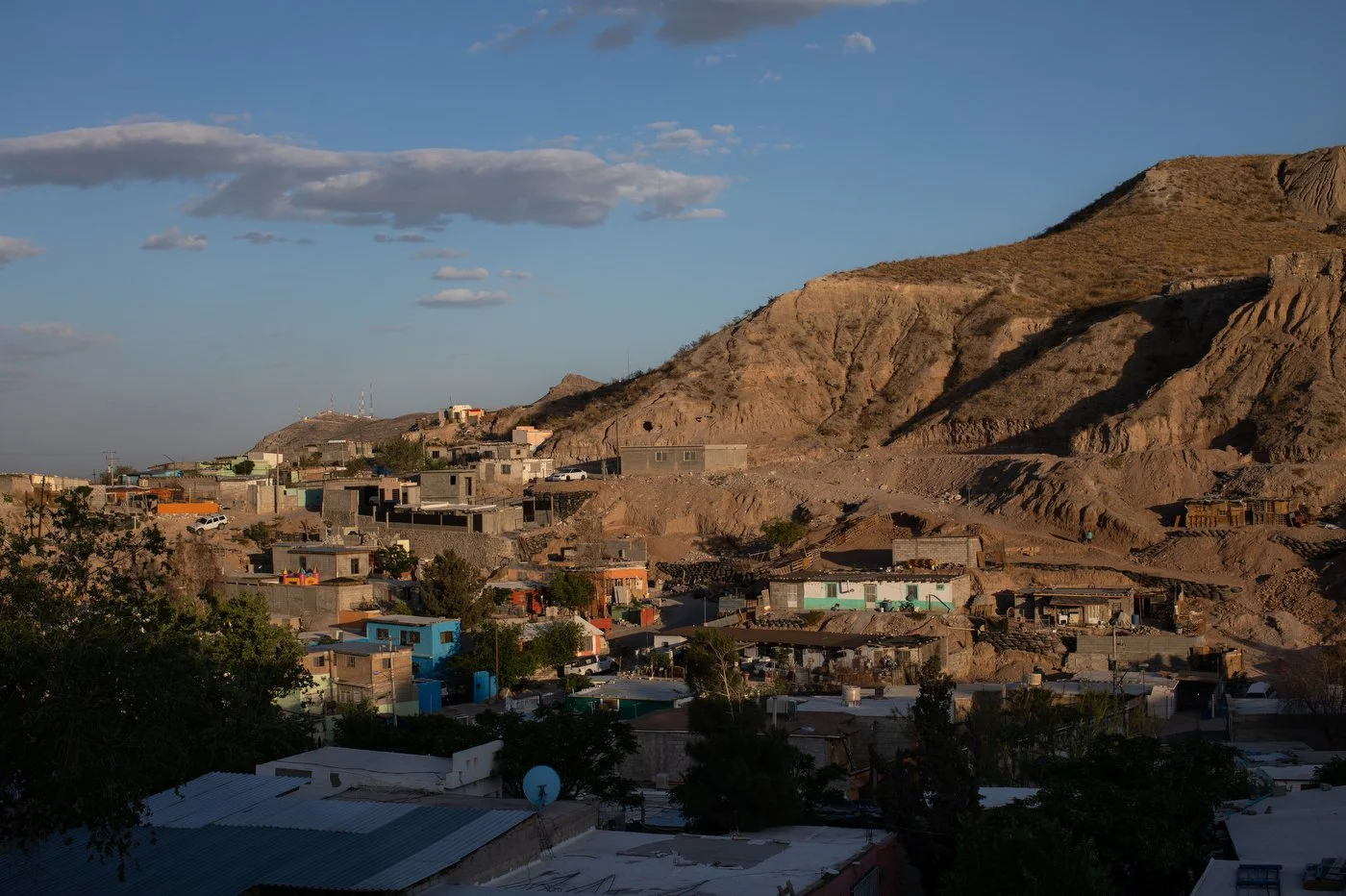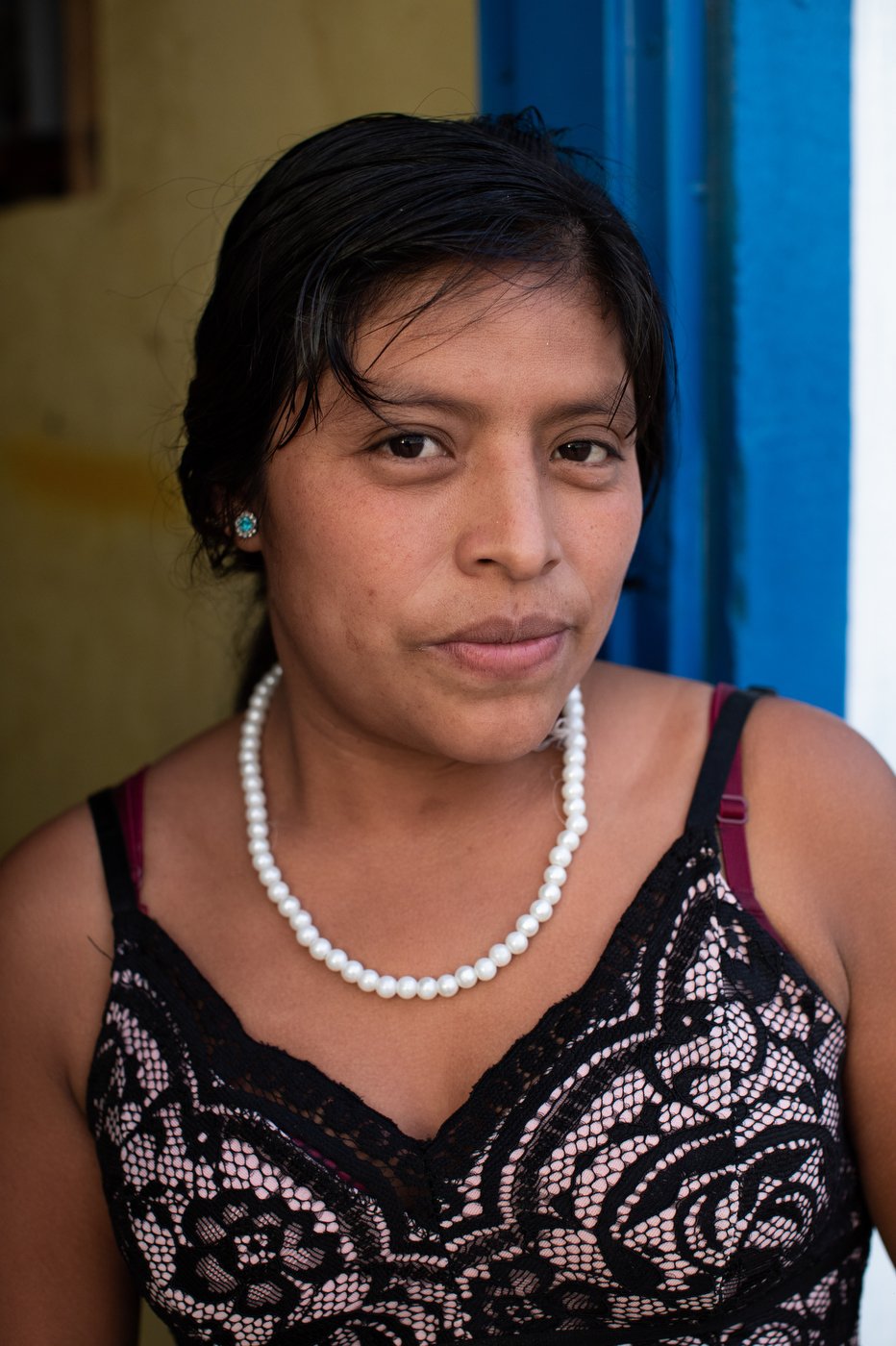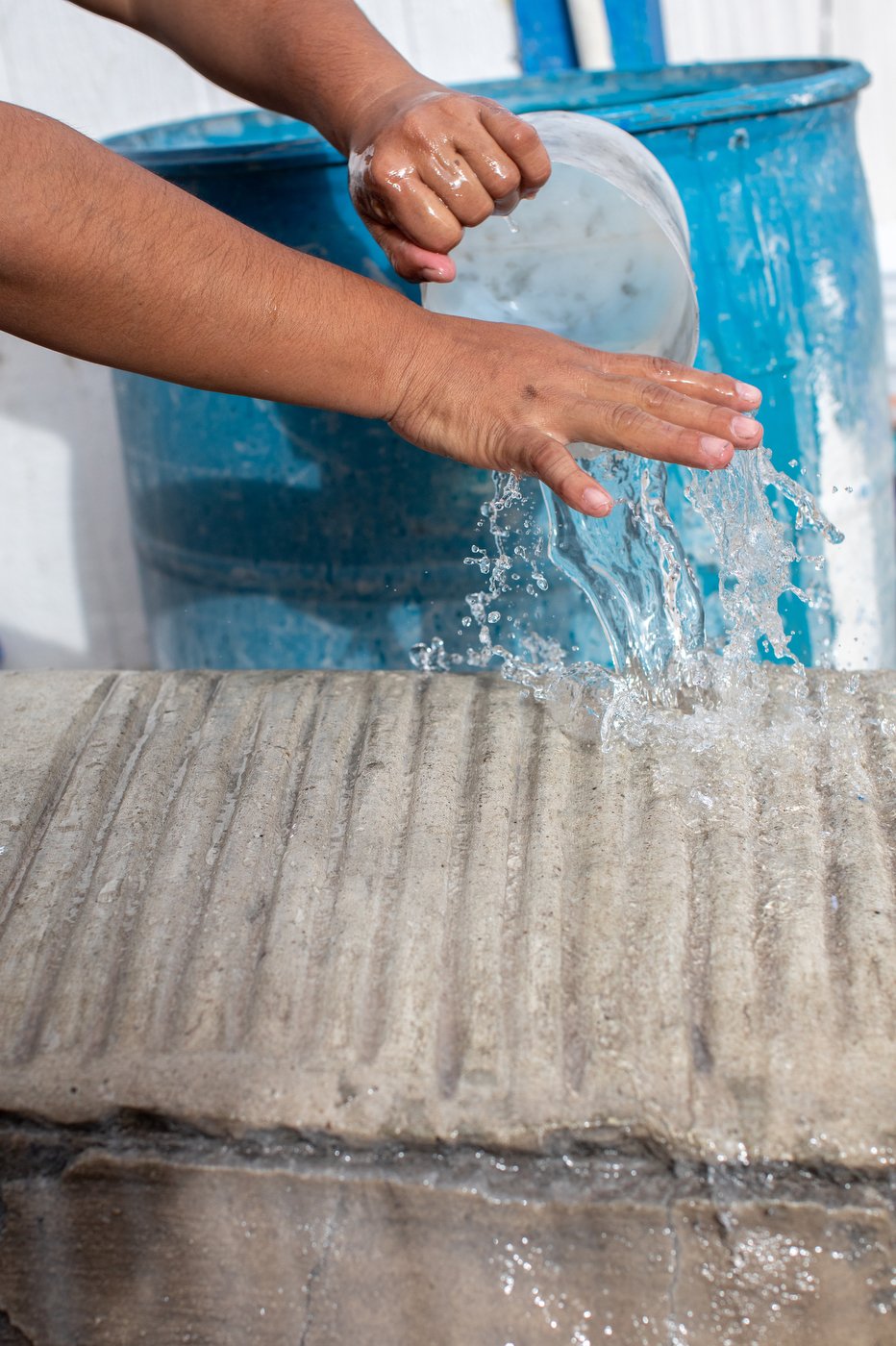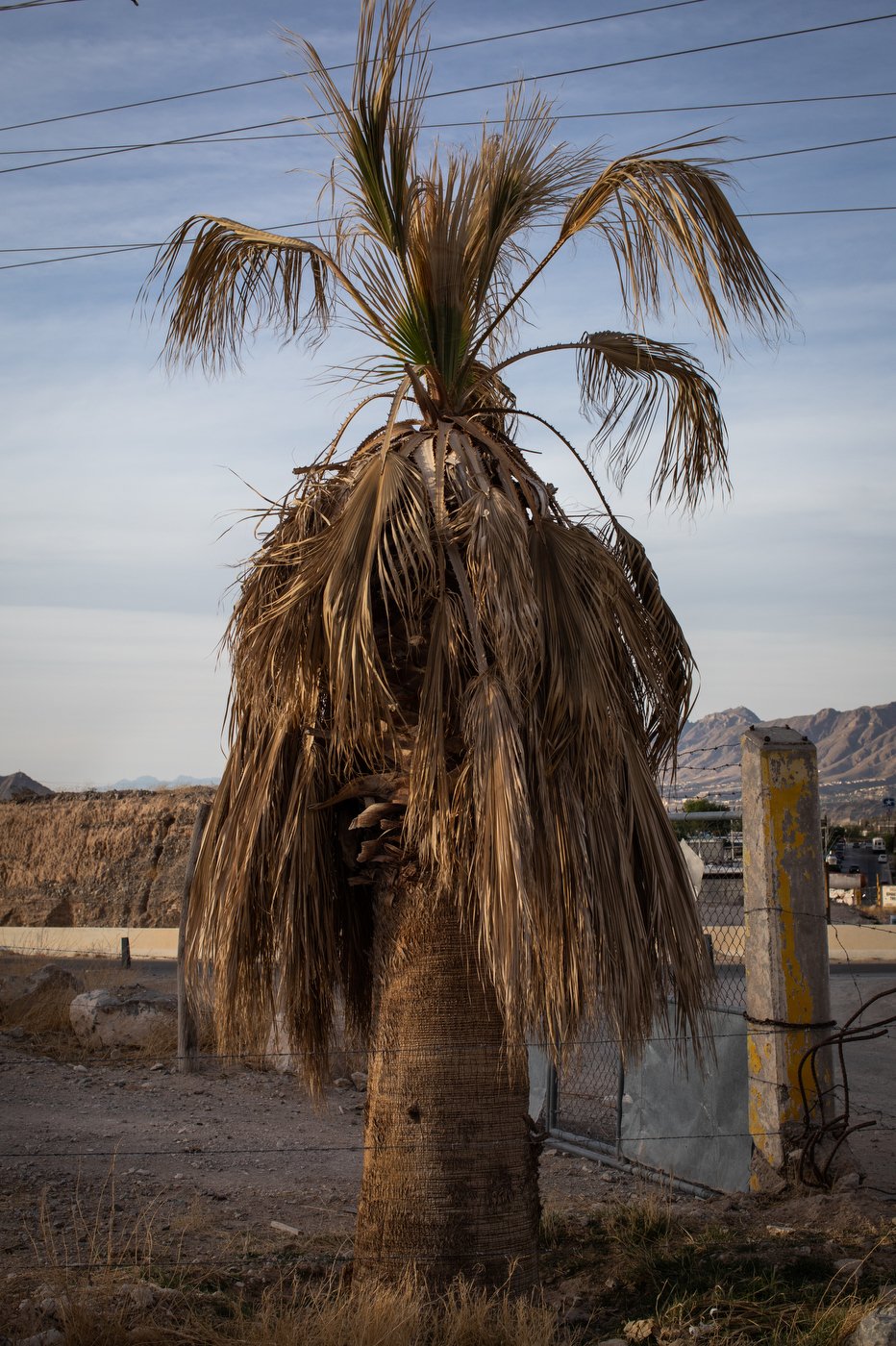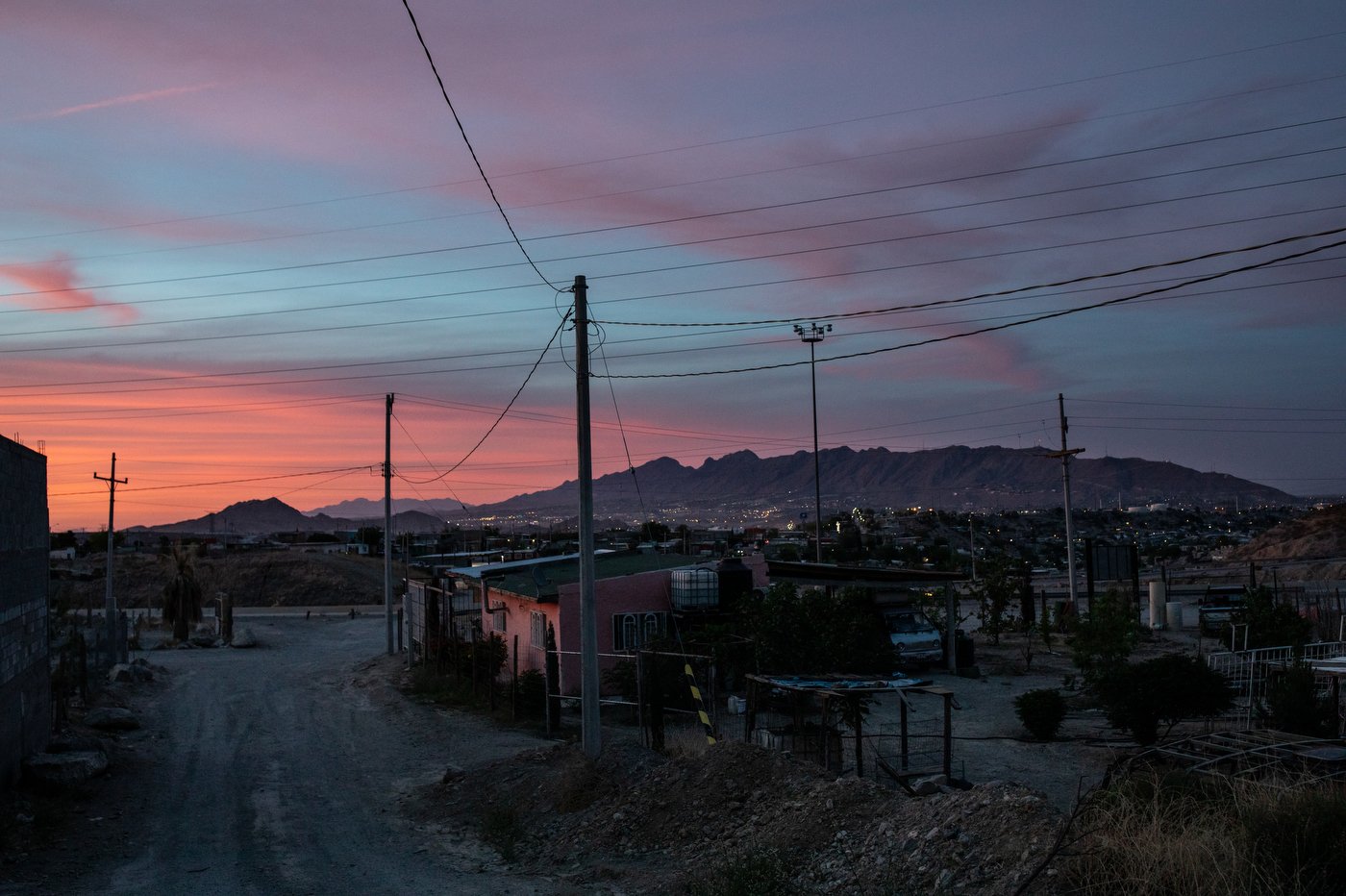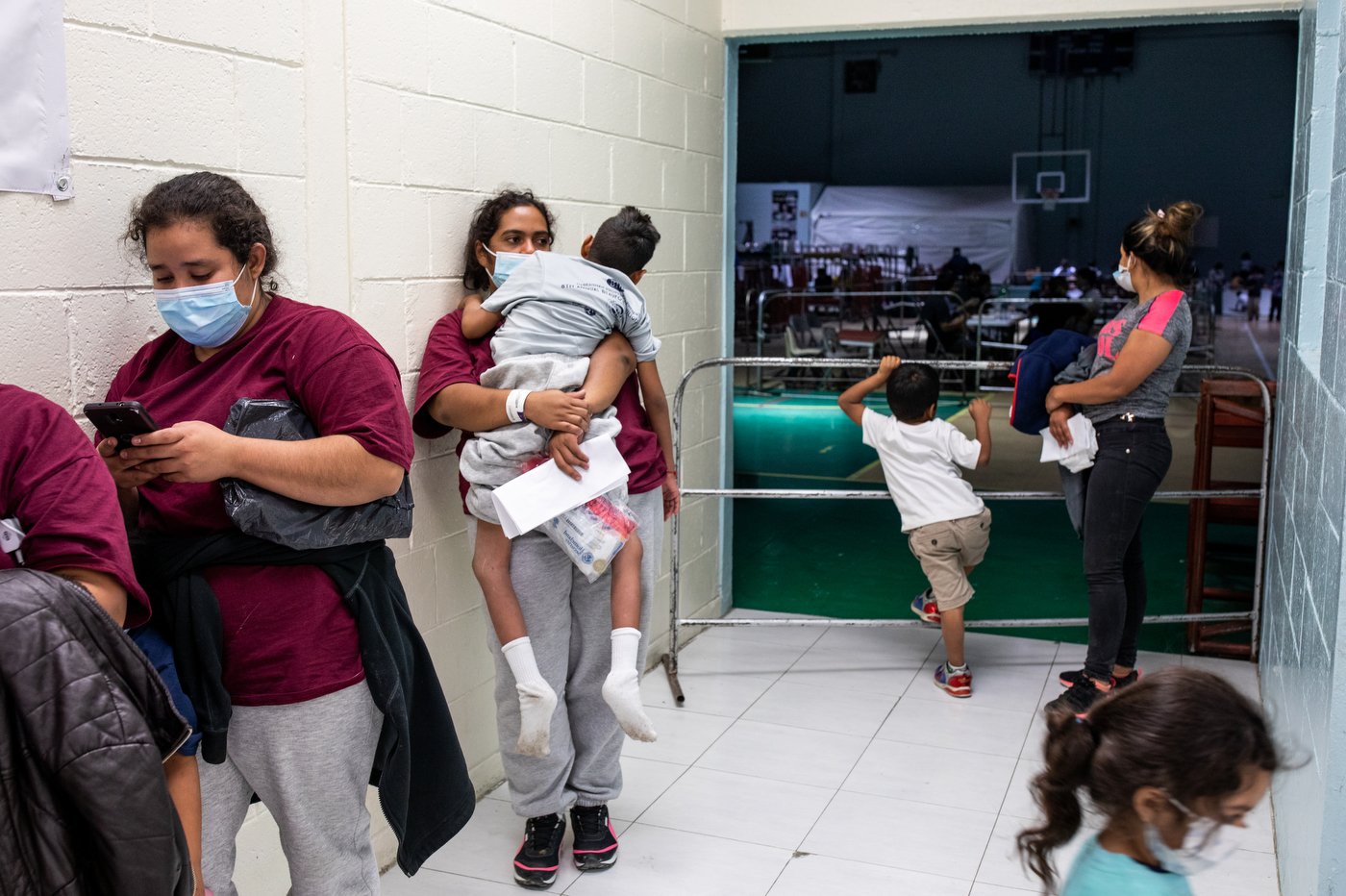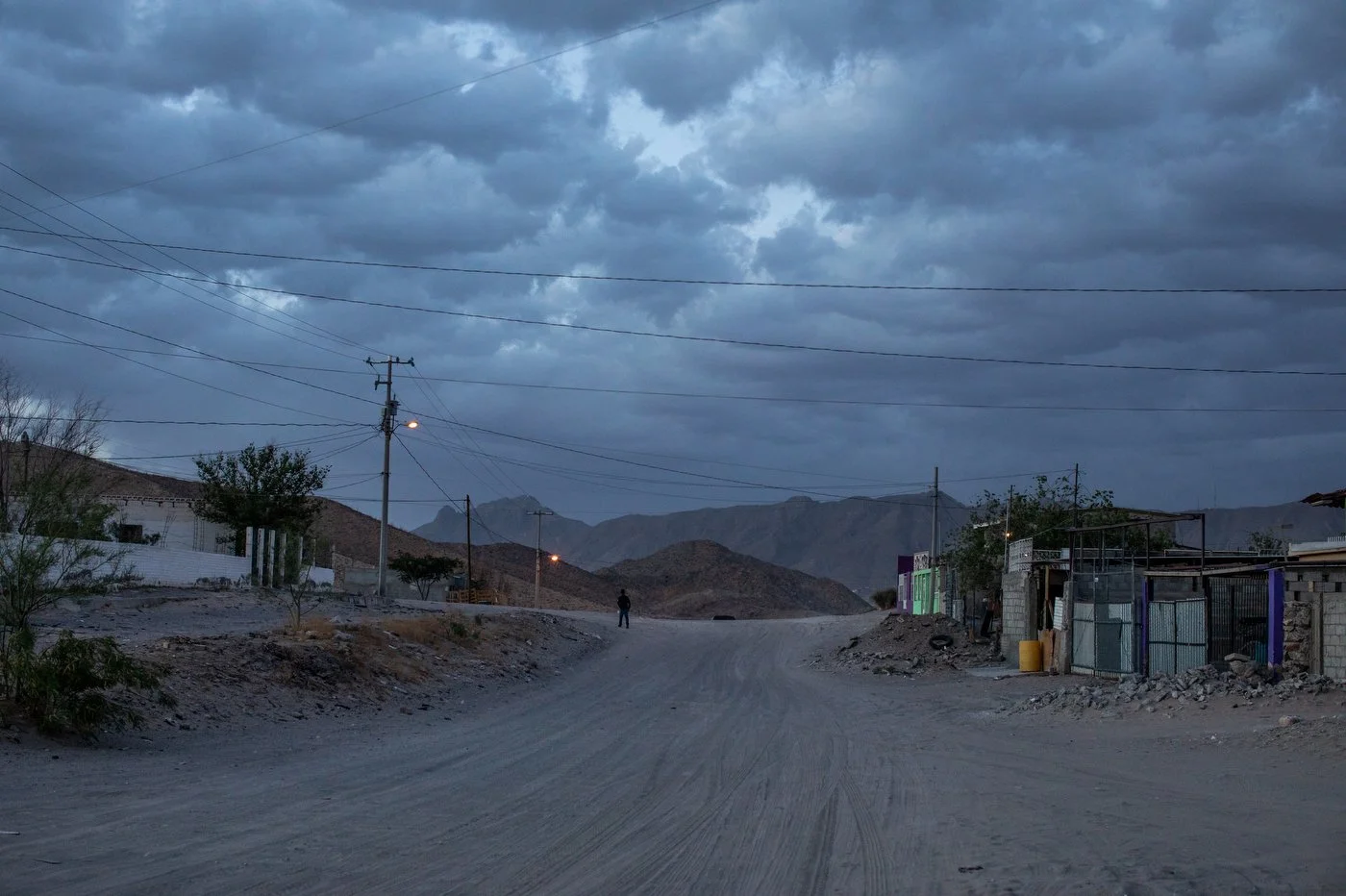ciudad juarez
JUÁREZ, MEXICO - At around 8:30 each night this past spring, some 100 people arrived at the Kiki Romero migrant shelter after having been caught trying to cross the border between Mexico and Texas. Many still wore the grey sweatpants and maroon shirts given to them at U.S. detention centers. They quietly formed a line that snaked out the building, which was previously a gym shared by the city’s high schools. Many had bloodshot eyes.
A few fathers carried toddlers in their arms, but the majority of newcomers were women and children. A mother held a baby clutching a Department of Homeland Security-branded plastic bag filled with their belongings. Another stood behind her sandy-haired son who was leaning against the wall, tears rolling down his cheeks.
Text by Nina Strochlic
Listen to “Waiting for Biden in Juarez” VICE News Reports podcast
